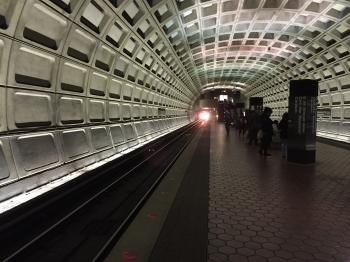Getting Around Washington
Getting Around Washington
All City Transport Options: What Locals Use and What’s Best for Tourists
General Overview
Getting around Washington can be a bit of a puzzle at first. The main thing to remember is that the public transport system here, especially the Metro, is pretty efficient but does require a bit of planning.So, you’ve got Metro trains, buses, and even a few streetcars in certain areas. The Metro generally runs from about 5 AM until 11 PM on weekdays, and the hours are a little shorter on weekends until midnight. Keep in mind that it tends to be busiest during rush hour—trust me, nothing like trying to squeeze into a packed train at 8 AM!
One common mistake tourists often make is thinking their regular Metro fare works the same throughout—it's not like a flat rate. Instead, fares range from about $2.00 to $6.00 depending on the distance. Oh, and don’t get me started on the frustration of trying to figure out how much you need to load onto your SmarTrip card. I once ended up with a negative balance after not checking—yikes!
To save some cash, I recommend looking into a tourist pass if you plan to ride the Metro multiple times. The day pass goes for $14.00, which can save you quite a bit if you’ll be traveling a lot compared to just purchasing one-off trips. Keep in mind that there are peak (more expensive) and off-peak (cheaper) rates that come into play, especially in the mornings.
One thing that pleasantly surprised me was the cleanliness of the stations. And you’ll definitely appreciate that a lot of the Metro stops, like Gallery Place, are centrally located near landmarks such as the National Gallery of Art and Chinatown, making it super convenient to hop around from sight to sight.
A local tip? Always check for any service alerts before heading out, especially during inclement weather (it can get a bit wild here in summer storms) because they sometimes slow down operations or even skip stops. And be mindful of the bike lanes if you're considering riding; they can be a bit chaotic during rush hour with all those commuters.
Just keep these quirks in mind, and you’ll be navigating Washington’s transport like a pro in no time!
Types of Transport

popular with tourists
The Metro in Washington, D.C. is an extensive system connecting key tourist areas, including the National Mall, Georgetown, and the Smithsonian museums, making it convenient for visitors to navigate the city. To pay for your ride, you can use a SmarTrip card—available at any Metro station—where a single ride costs around $2.00 to $6.00 depending on the distance traveled. A valuable tip is to plan your trip using the Metro’s online trip planner or mobile app; this can help you avoid peak hours and crowded trains, which typically occur during weekdays from 7-9 AM and 4-6 PM. Remember to always stand behind the yellow safety line on the platform and pay attention to train announcements or digital signs indicating delays or service changes, especially on weekends.

popular with tourists
The bus system in Washington, D.C. is extensive, covering key tourist areas such as the National Mall, Georgetown, and historic neighborhoods like Adams Morgan. A one-way fare on Metrobus is currently $2.00, and you can pay using a SmarTrip card, which is the most convenient method, or cash (exact change only). For tourists, it's important to plan your trip using the DC Metro Transit app or the website to check routes and schedules, as buses can be less frequent on weekends. If you're looking to save time, consider catching express buses, such as the 30N and 30S, which go directly to popular destinations without many stops. Always be mindful of your personal belongings and stay alert, especially during busy travel hours.

Taxis in Washington are readily available, especially in busy areas like Downtown, the National Mall, and near major attractions. Fares typically start around $3.25, with additional charges for each mile traveled, so a ride from the National Mall to Georgetown might cost you about $15-$20. It's important to note that most taxis accept credit cards, but always ask before starting your ride. A key tip for tourists is to have your destination written down or on your phone, as some drivers may not be familiar with less popular locations. When traveling late at night, it's wise to use reputable taxi services or dispatch numbers to ensure your safety.

The auto transportation in Washington is widely available, making it easy to explore attractions from the historic Georgetown area to the National Mall. Rental car prices typically range from $40 to $100 per day, and most agencies accept major credit cards for payment—be sure to check if you need insurance, which is often offered by the rental company. A key tourist tip is to familiarize yourself with local traffic patterns, as rush hour can significantly delay travel; aim to drive before 7 AM or after 9 AM to avoid congestion. Additionally, make use of parking apps like ParkMobile to find and pay for parking easily, especially near popular spots like the Lincoln Memorial. Finally, always keep an eye out for pedestrians and cyclists, as Washington is a busy urban area with many people on the move.
Here you can learn about all types of transport in Washington. What transport is available, how to reach tourist attractions and which mode of transport is optimal.
